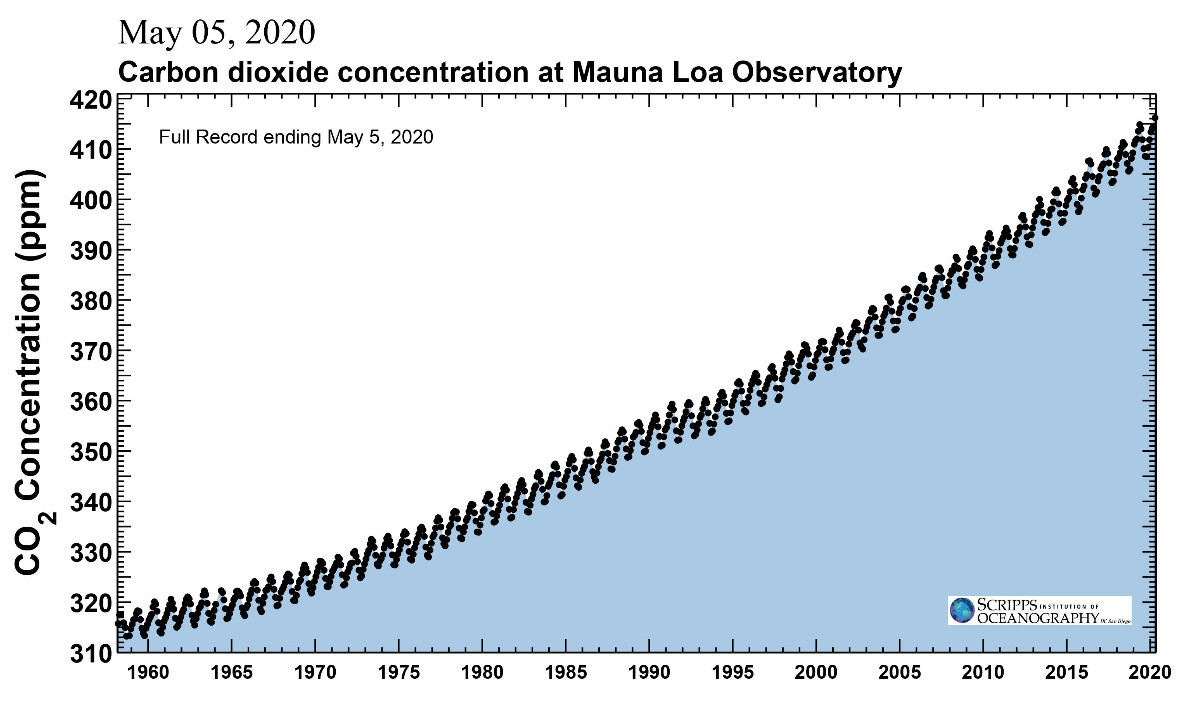A downturn in global fossil fuel use has been prompted by curtailments of travel and social gatherings in response to the spread of the coronavirus. Could this downturn be reflected in atmospheric carbon dioxide readings that comprise the record known as the Keeling Curve, which is managed by scientists at Scripps Institution of Oceanography at UC San Diego?
Scripps Oceanography geochemist Ralph Keeling said fossil fuel use would have to decline by about 10 percent around the world and would need to be sustained for a year to show up clearly in carbon dioxide levels, which are expressed as parts per million (ppm) of air. No events in the 62-year history of the Keeling Curve – including the global economic downturn of 2008 and the collapse of the Sovi et Union in the late 1980s – have caused such a drop to date. The influence of fossil fuel use is usually less perceptible in short-term variations than in long-term trends, Keeling added.
et Union in the late 1980s – have caused such a drop to date. The influence of fossil fuel use is usually less perceptible in short-term variations than in long-term trends, Keeling added.
It has been reported, however, that CO2 emissions from China have dropped by 25 percent since the beginning of the outbreak. That alone represents a 6-percent drop in global emissions.
Based on calculations of how many fewer tons of carbon dioxide would be added to the atmosphere if there were a sustained 10-percent decline, Keeling estimated CO2 levels in the atmosphere would deviate by roughly 0.5 ppm under that scenario.
History has shown that carbon dioxide levels typically resume their climb quickly as normal economic activity rebounds. If there is any benefit of the coronavirus event in terms of slowing the pace of climate change, it could be the changing of people’s travel and work habits in ways that lead to sustained reductions in fossil fuel use. Only those kinds of long-term systemic reductions will change the trajectory of carbon dioxide levels in the atmosphere, Keeling said.




